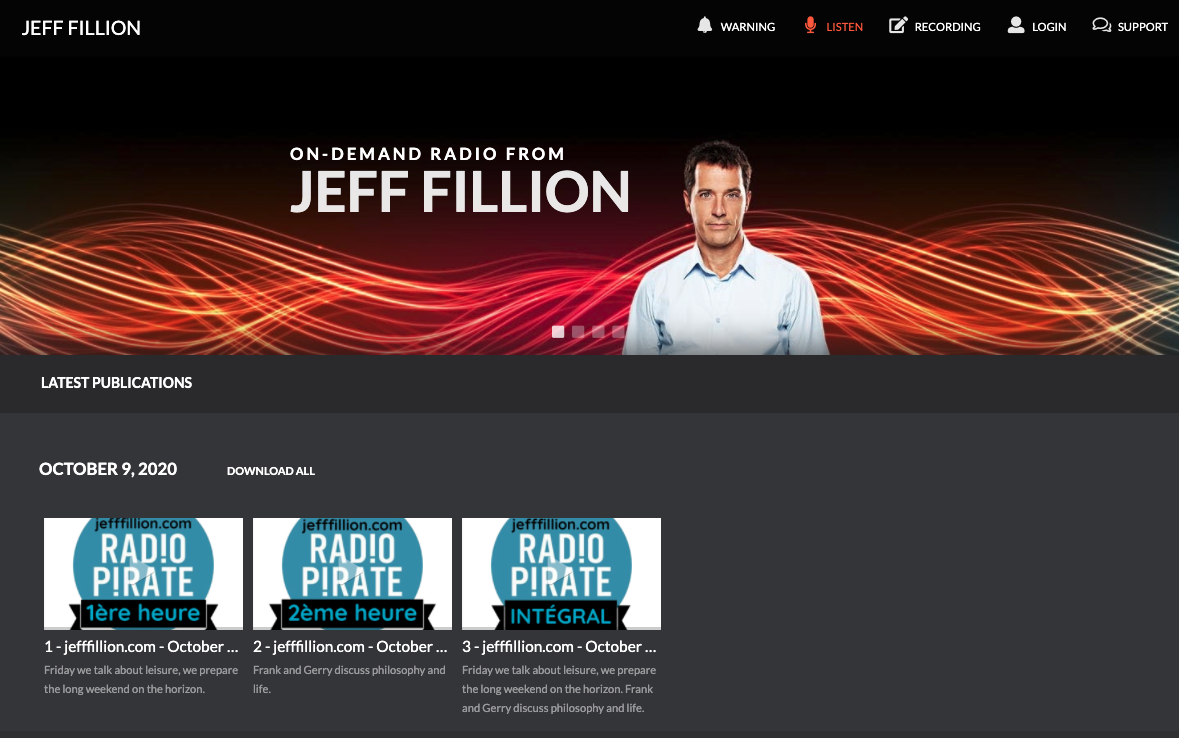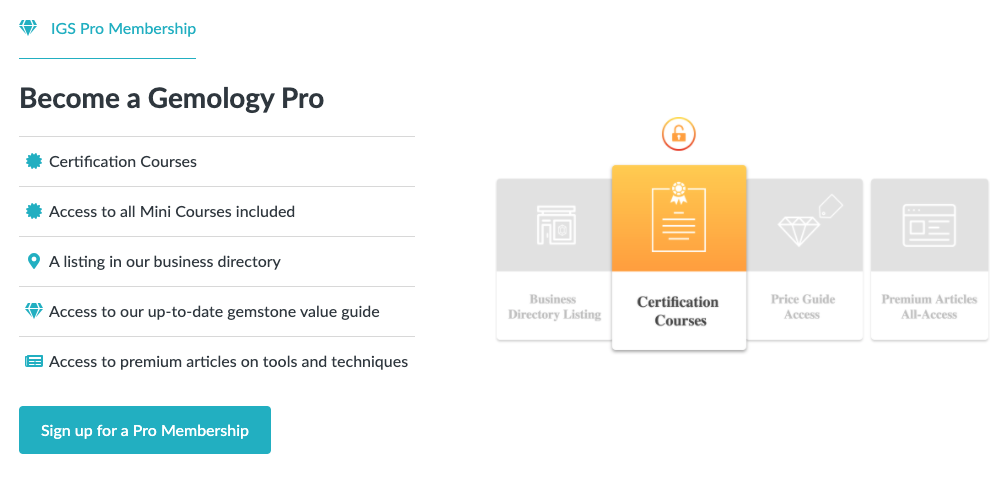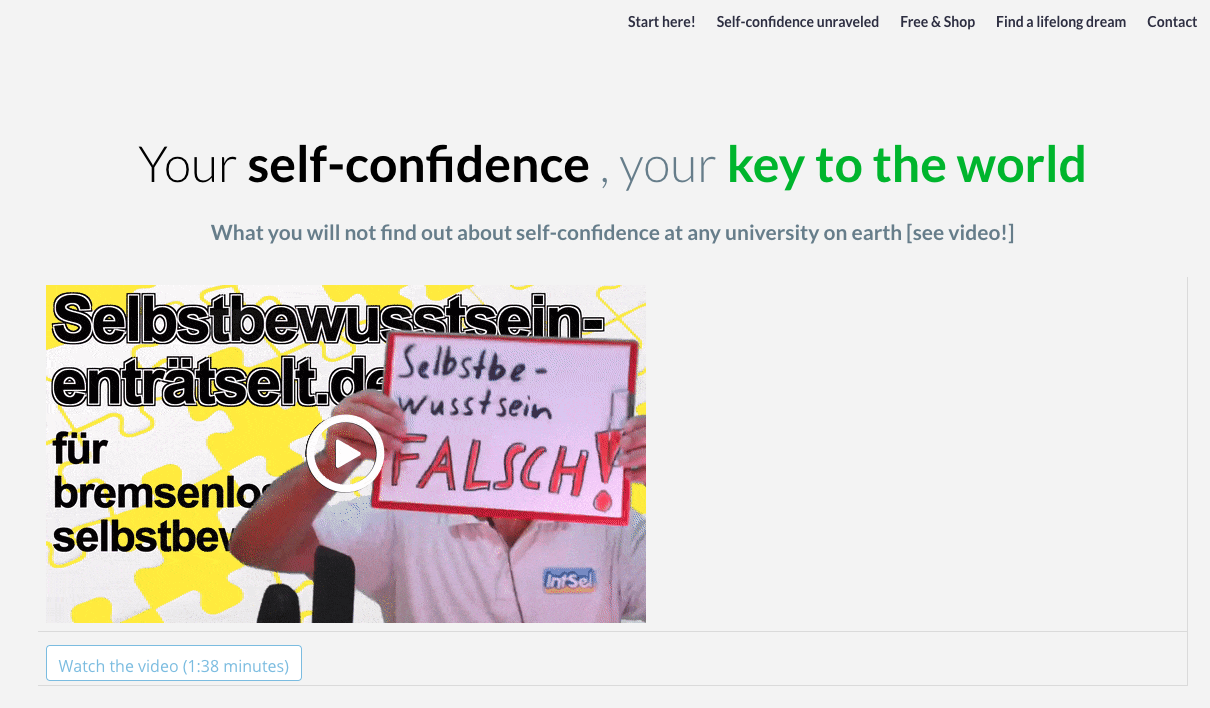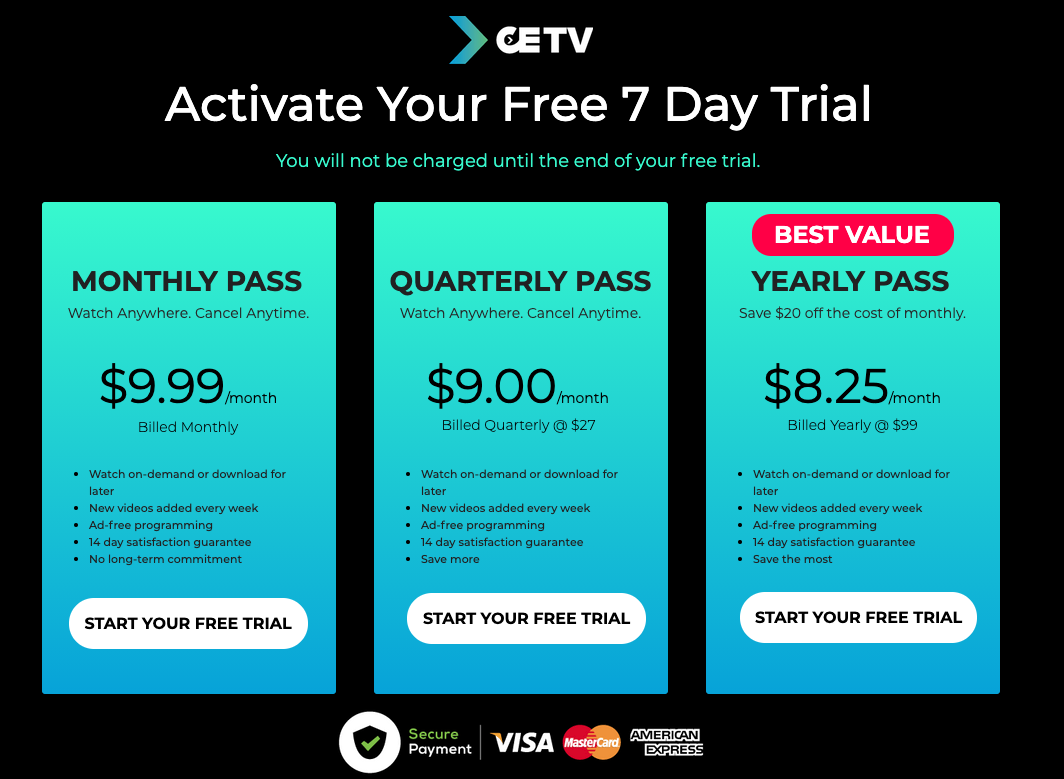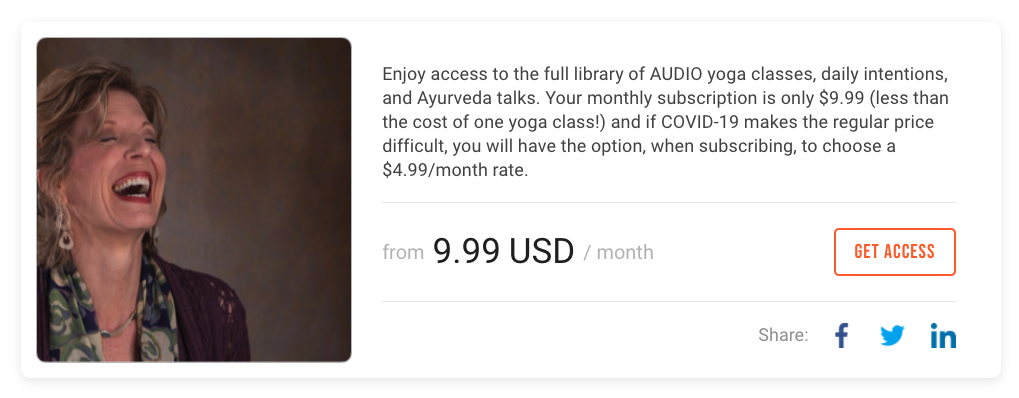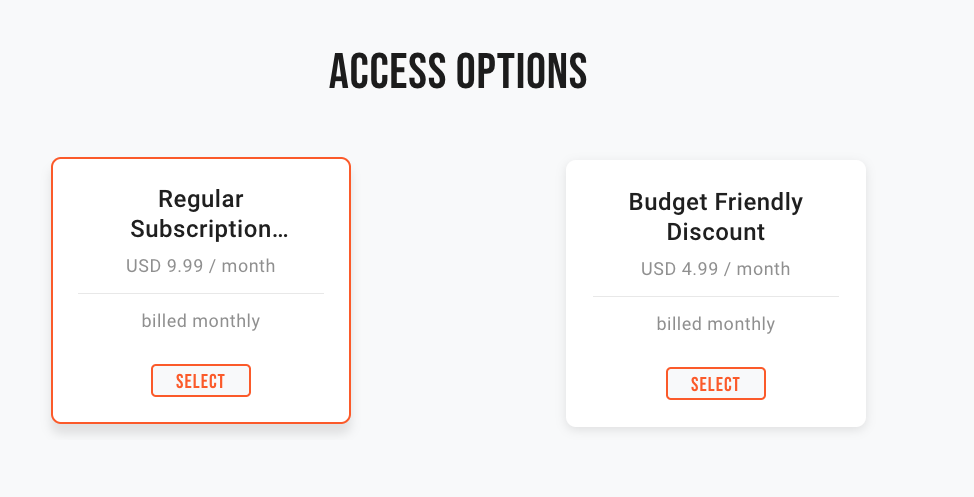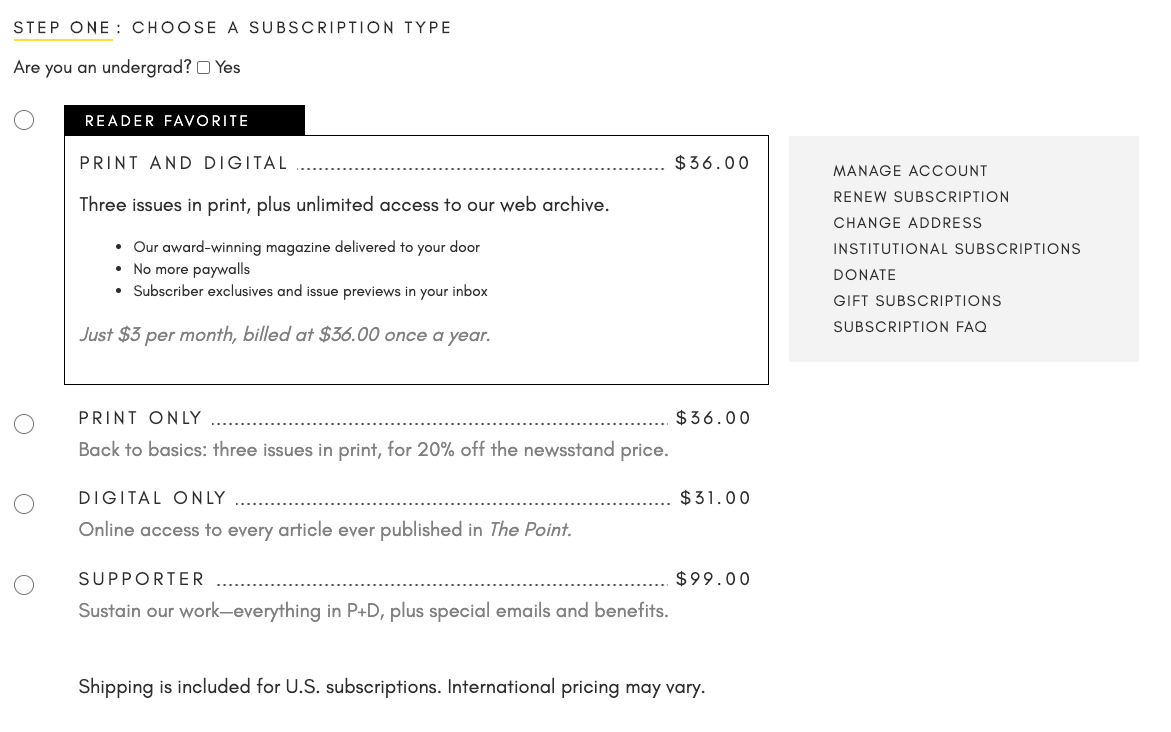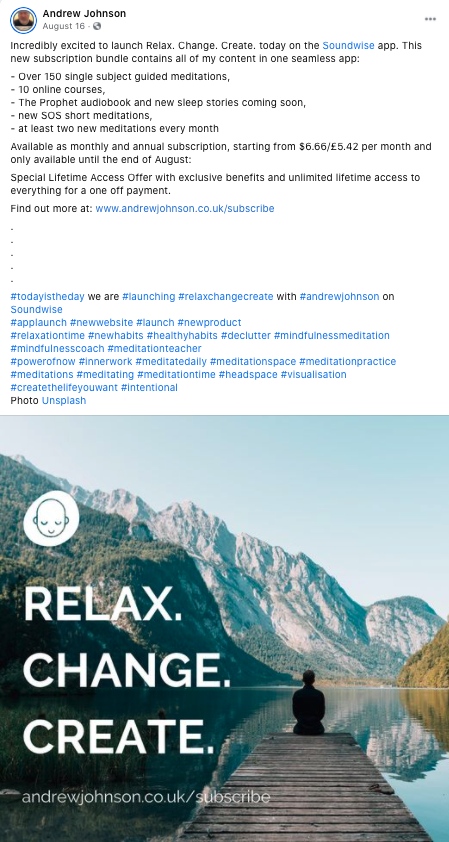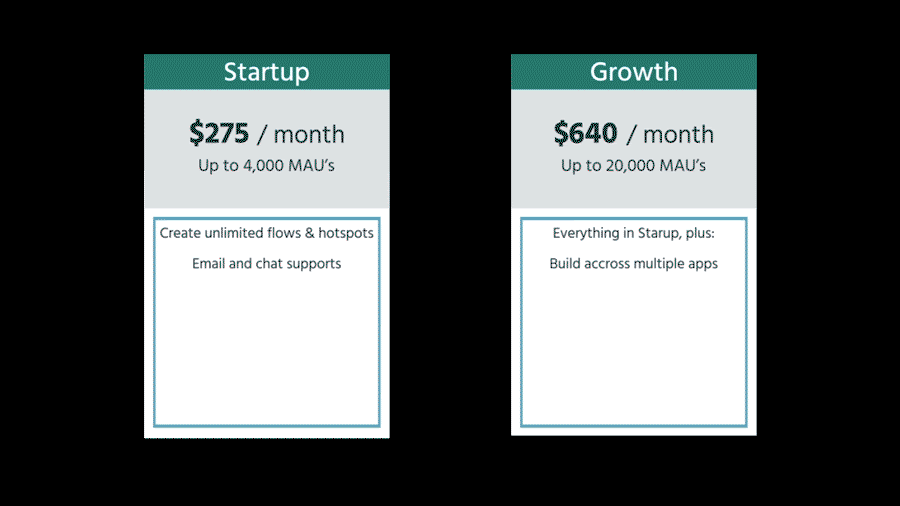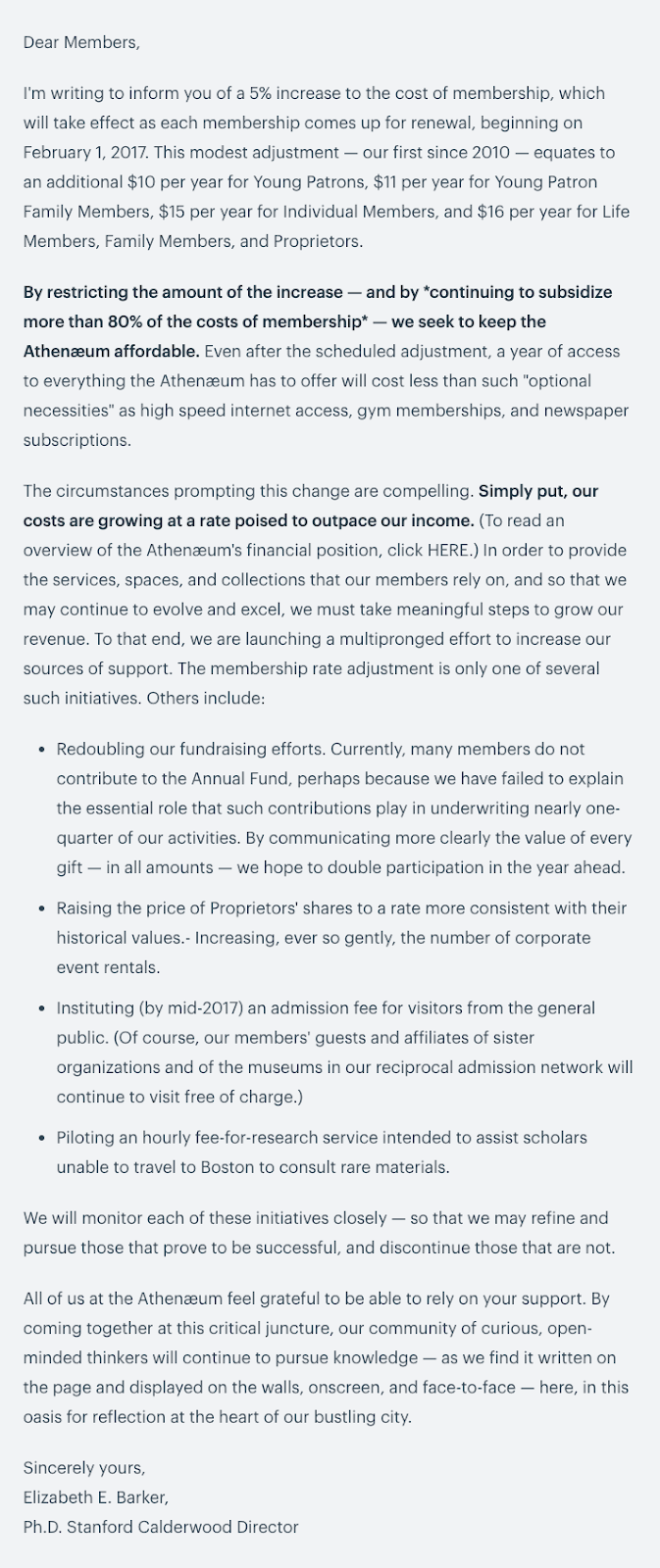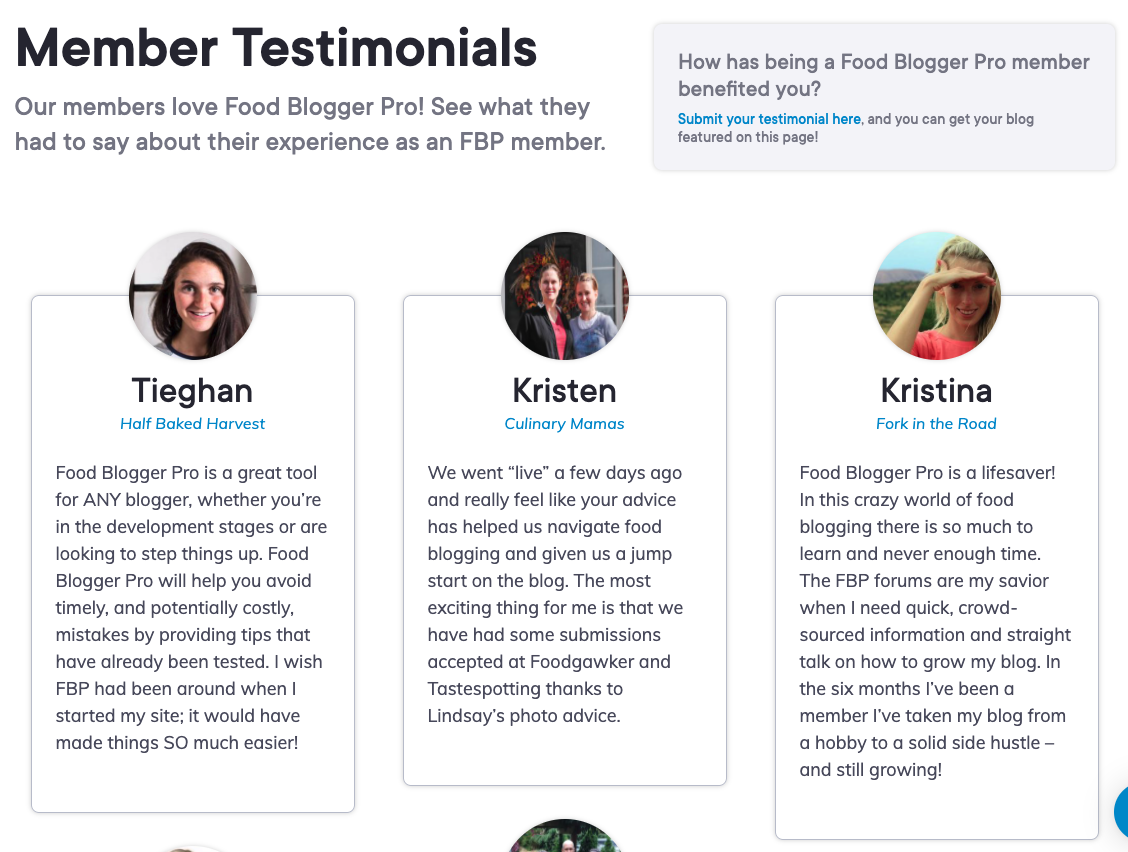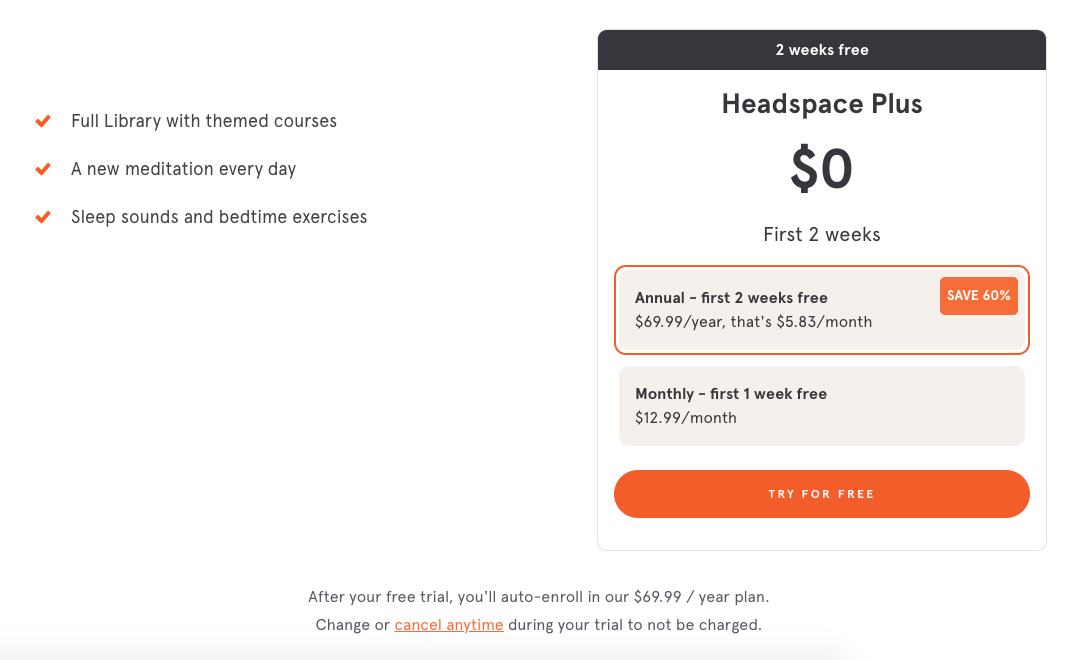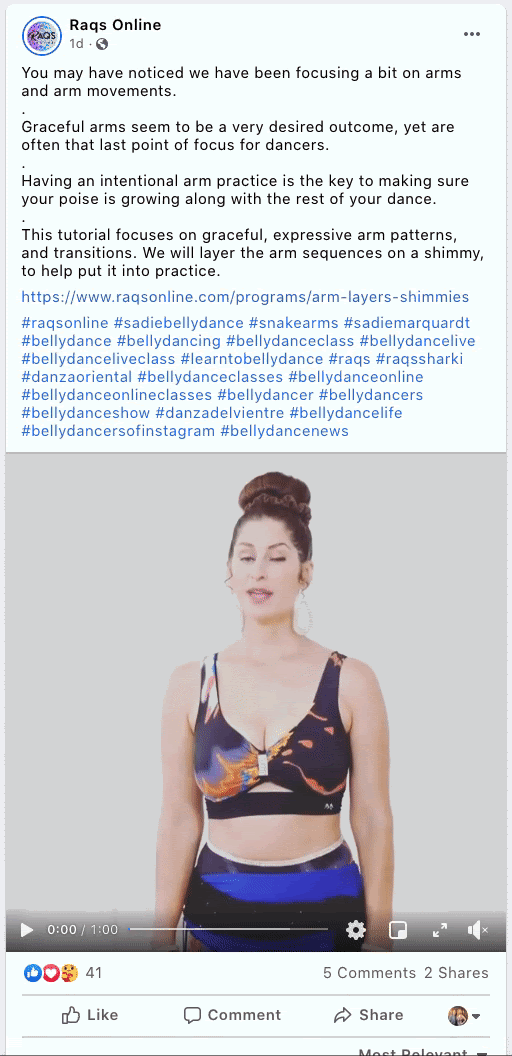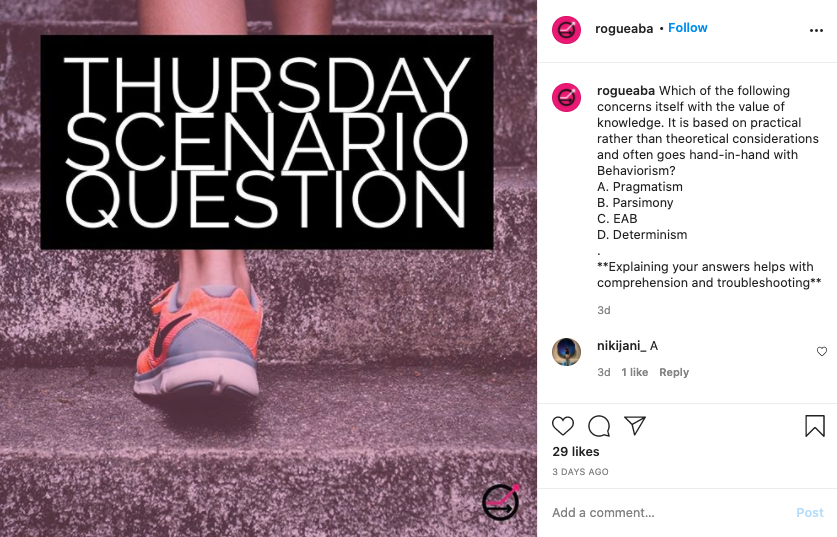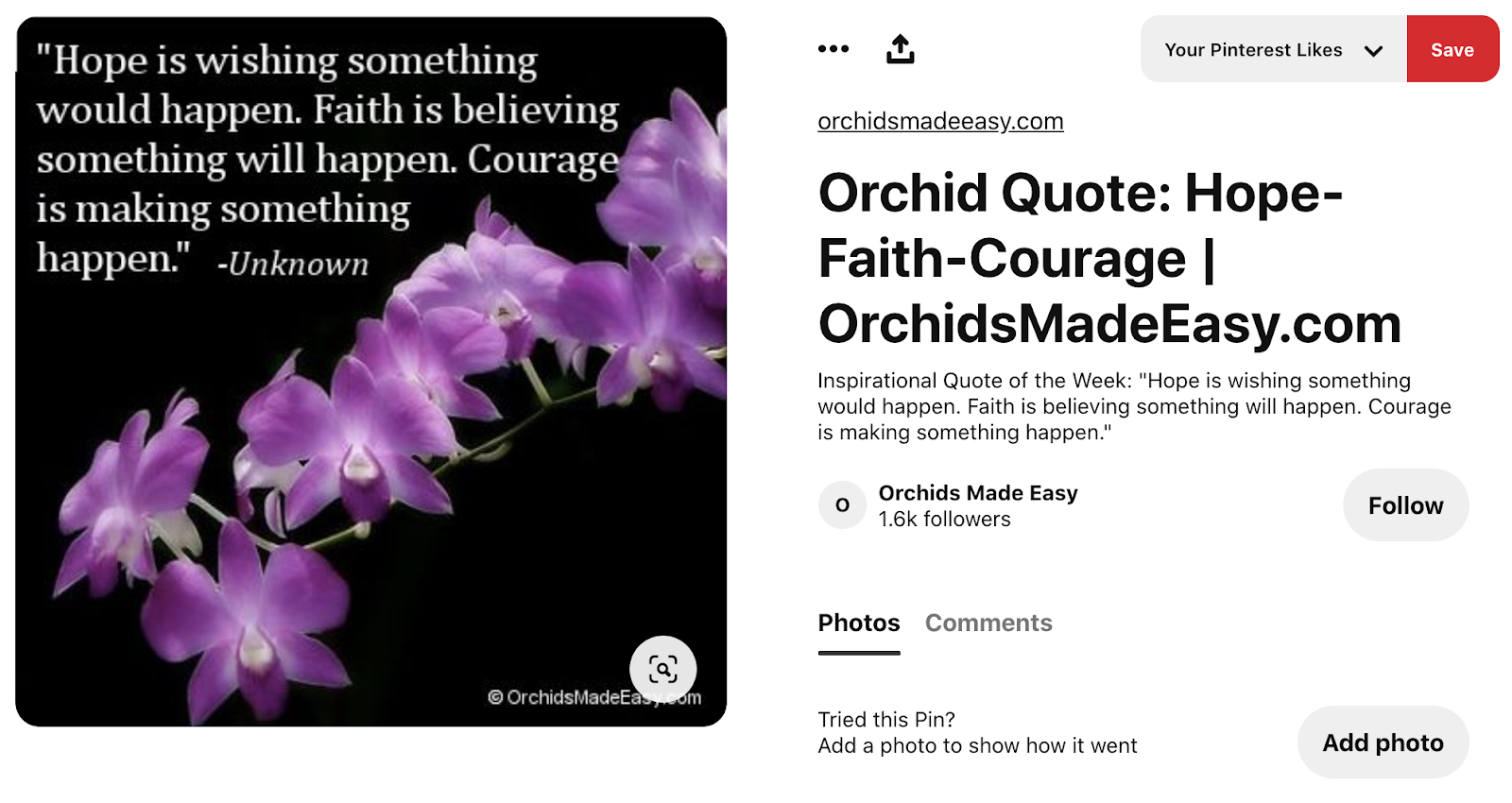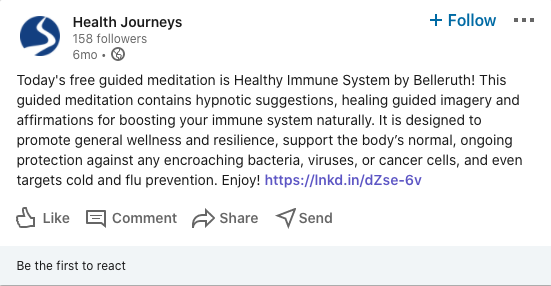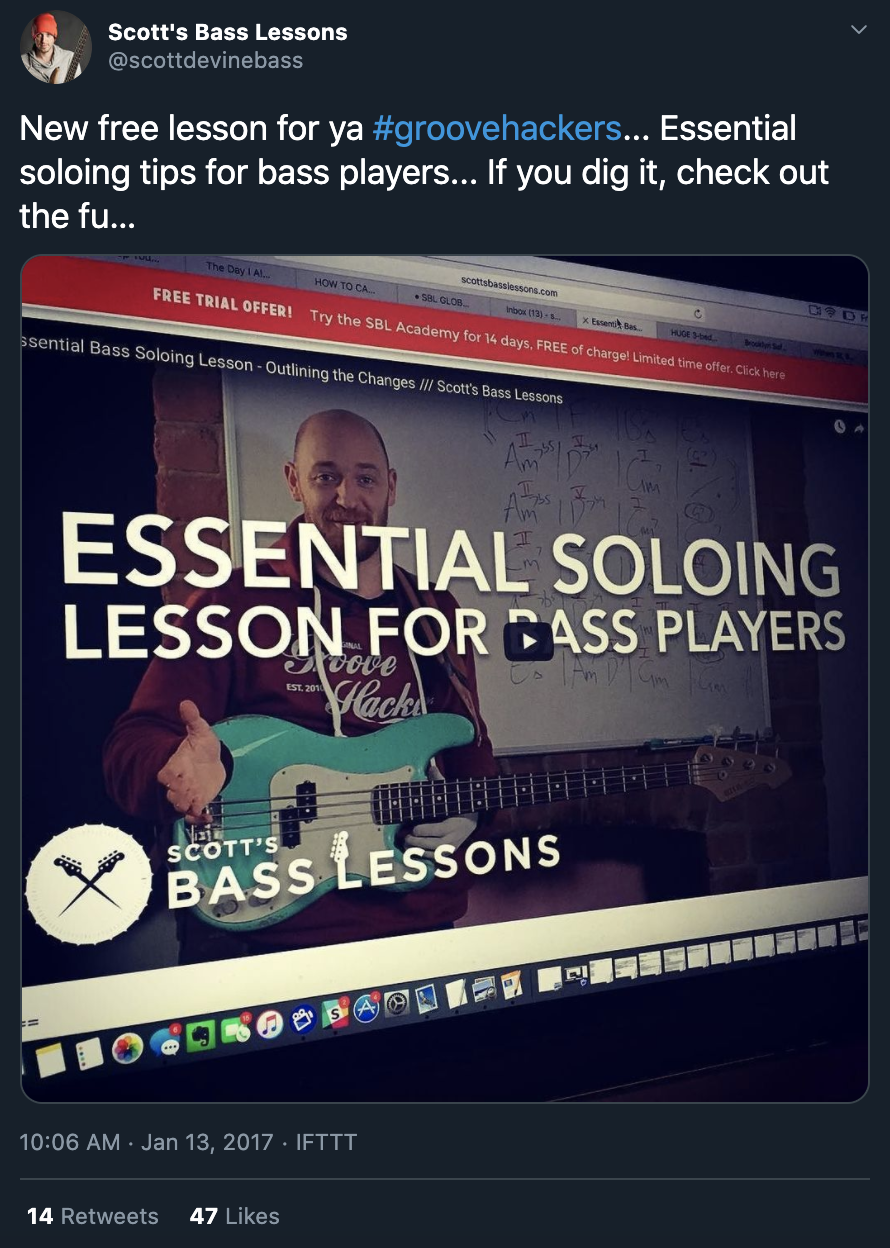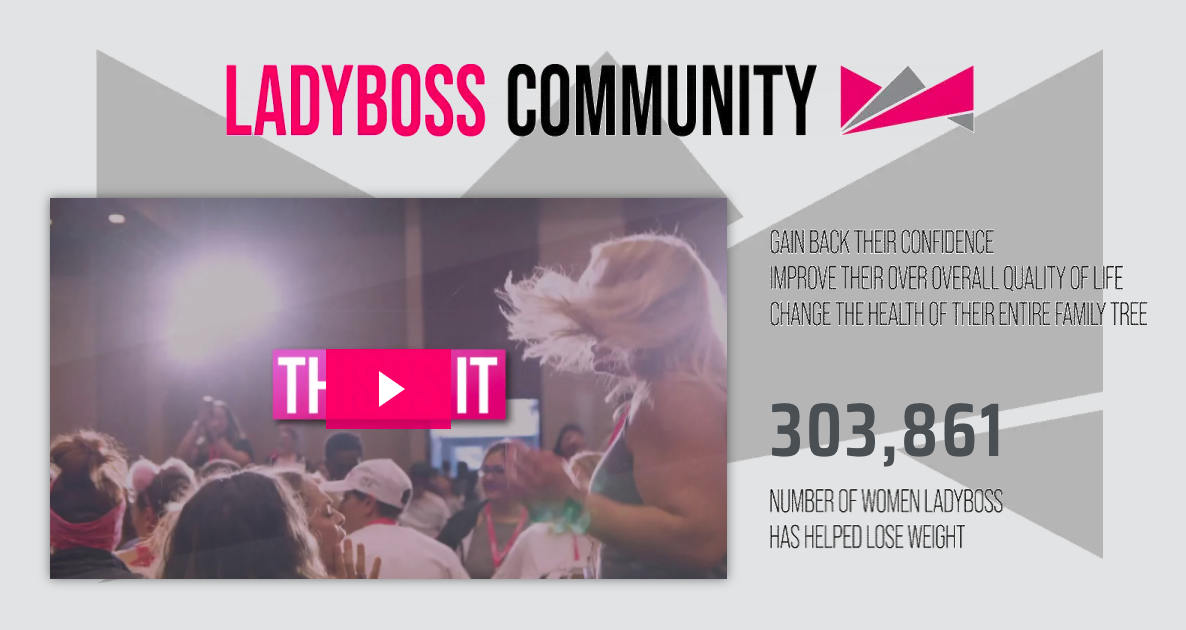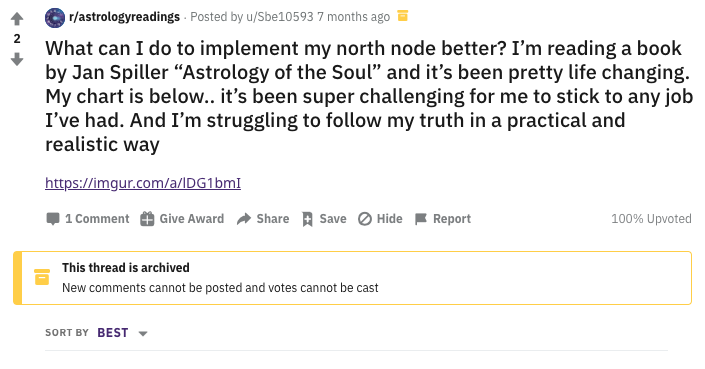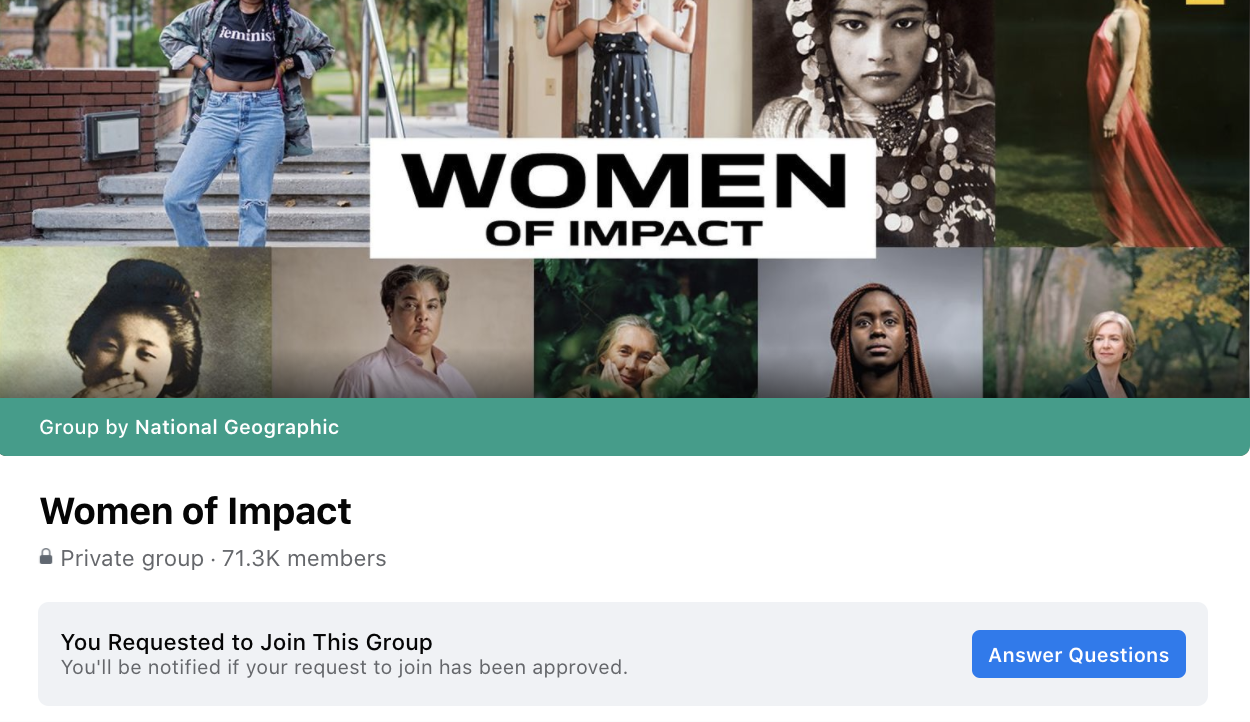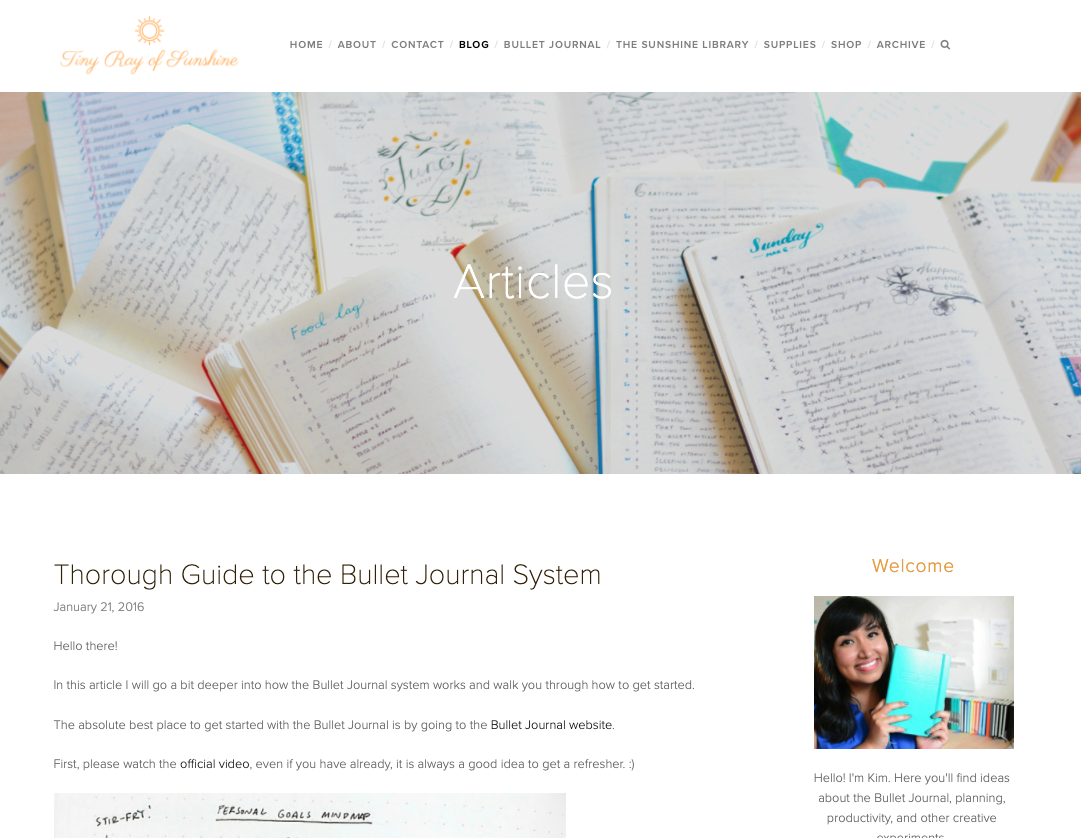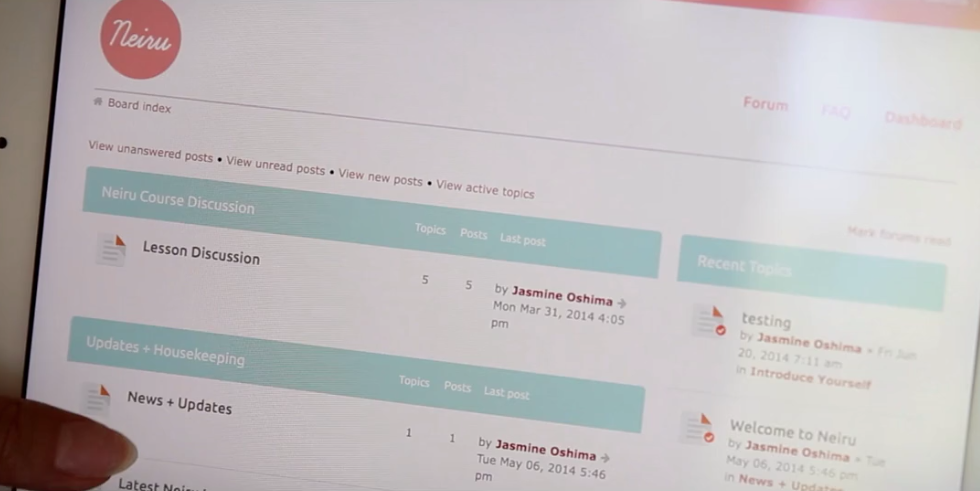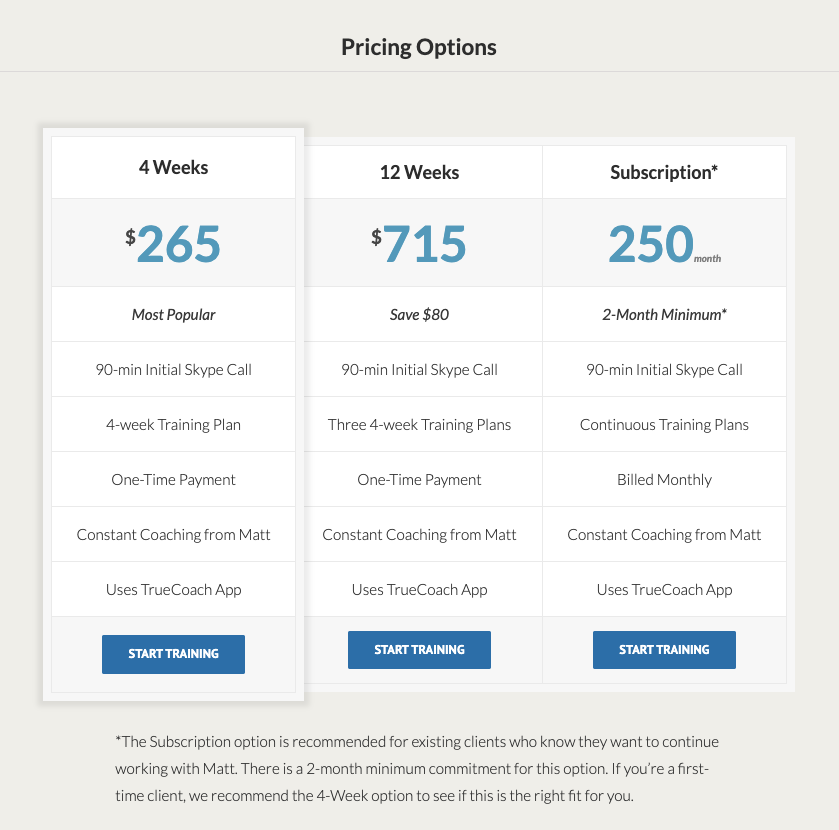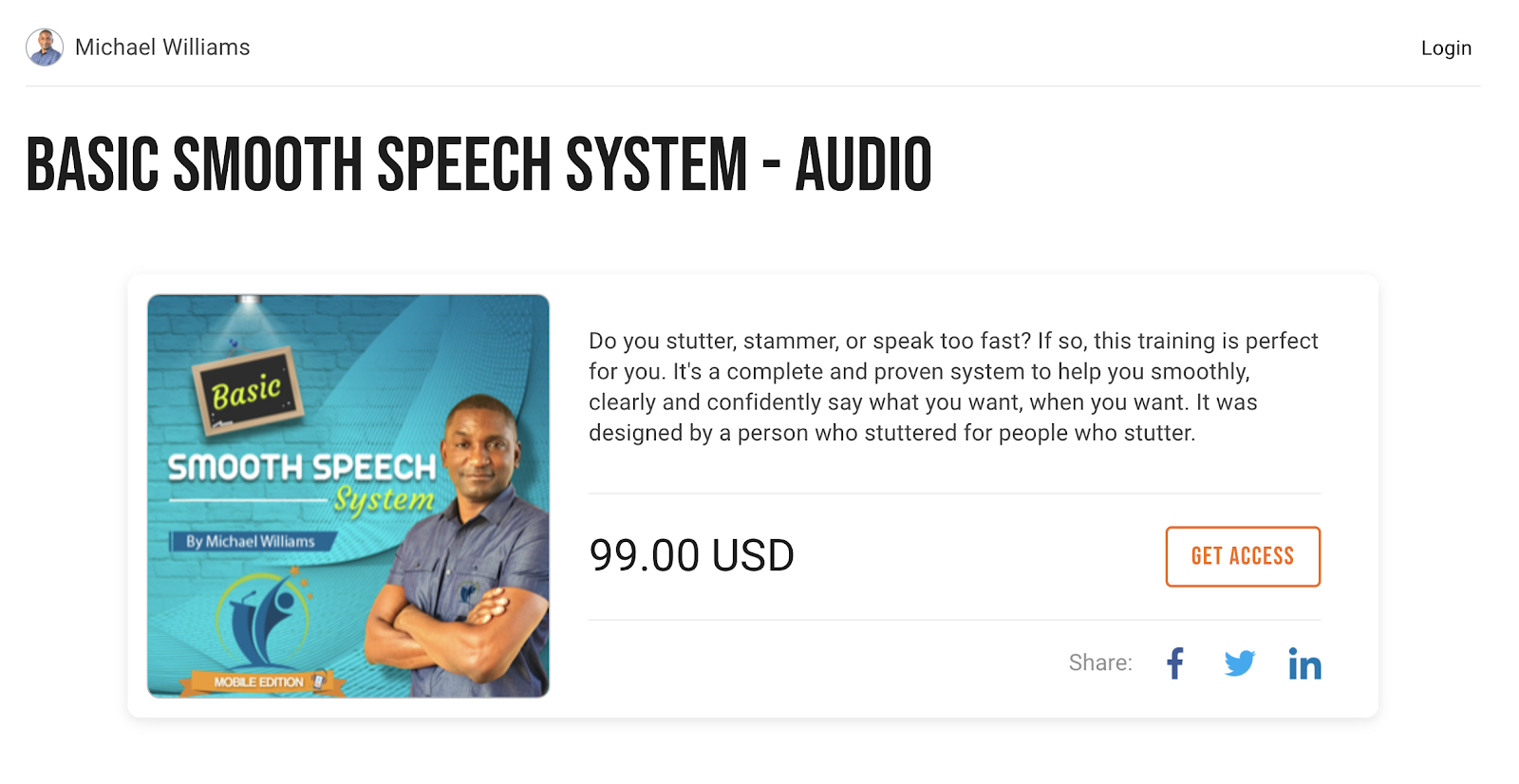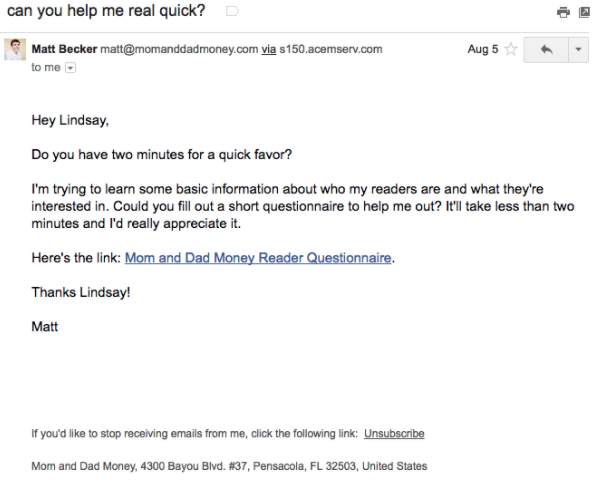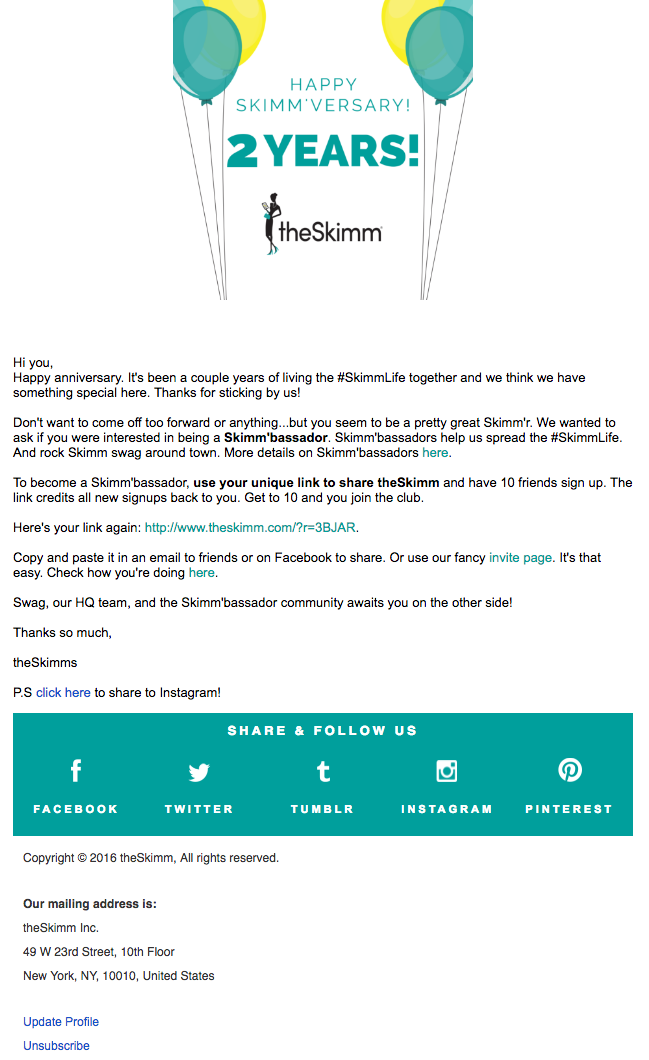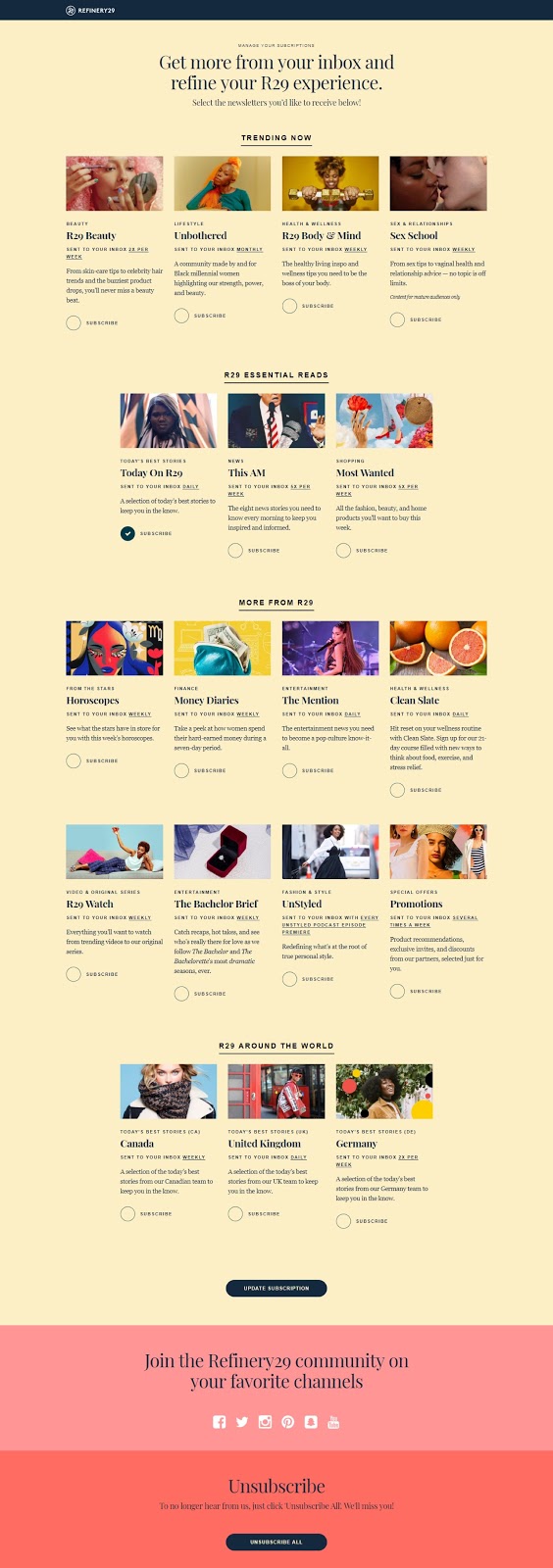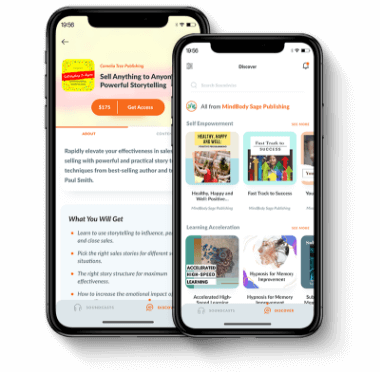Table of Contents
Module 2 - Content: Is Your Offer a Good Fit for the Subscription Model?
Module 3 - Pricing: Is Your Offer Priced Right? (And How to Adjust if Not)
- How to Structure and Pick the Right Price the First Tim
- Create Pricing Tiers or Packages
- Give Discounts to Customers Who Pay in Advance
- Set Subscriptions to Renew Automatically
- Special Discounts for Members
- For a Limited Time, Offer Lifetime Access
- How to Increase the Price of Your Subscriptions Over Time
- Keep Existing Members at the Same Price, For a Short Time
- Stagger Price Increases
- Only Increase One Tier at a Time
- Communicate Price Increases Clearly
Module 4 - Marketing Strategy: How to Find New Subscribers
- Find New Subscribers Using Common Marketing Strategies (With Examples)
- Testimonials and Subscriber Case Studies
- Offer a Free Trial
- Social Media
- Online Ads
- Communities, Forums and Social Media Groups
- SEO + Public Content
- Press Outreach
Module 5 - Retention Strategy: Keeping Subscribers Happy
- An Essential List of Retention Tips and Best Practices
- Give New Subscribers a Warm Welcome
- Let Subscribers Interact with One Another
- Get Personal
- New Content
- Have Stellar Customer Service
- Celebrate Your Members
- Treat People Who Leave With Respect
Module 1 - Introduction
Successful content businesses are built on the backs of loyal audiences. Content creators who’ve attracted a loyal base of subscribers, whether broad or niche, are in a good position to monetize that content by increasing subscriptions or memberships over time.
This mini course is built for entrepreneurs who’ve cleared the
the biggest hurdle, finding that loyal base, and are ready to start optimizing for a steady increase in membership or subscription sales.
But whether you call them members or subscribers, we’re all talking about the same thing—a customer who pays for content on a recurring, regular basis.
For the sake of brevity, we’ll refer to them as subscribers from here on out.
If it’s not the case for you already, they can be a steadily growing source of revenue. Take Dan Carlin’s subscriber base as an example. He’s best known for Hardcore History, a paid subscription podcast that attracts millions of downloads per episode. He got his start on the radio, and eventually moved his show online in podcast form to grow a subscriber base.
It was a smart move.
This massive market opportunity is underscored by subscriptions’ profitability. Quickbooks reported that the subscription model is 217% more profitable than a one-time sale model—and that it’s easier on the business. 70% of businesses feel it’s easier to retain customers than find new ones, making subscriptions a more profitable option in the long run.
Once you’ve entered the game of content and the subscription economy, how to achieve a revenue hockey-stick? In this mini-course, we’ll go through that journey step-by-step and cover:
- Your content: is you content ripe for a subscription model?
- Your pricing model: is your offer priced right? (and how to adjust if needed)
- Your marketing strategy: how do you find new subscribers?
- Your retention strategy: how do you keep your current subscribers happy?
We’re diving into these pillars because they impact your total revenue. Total revenue is calculated by multiplying your subscription price by your number of subscribers, and then again by subscription tenure. You’ll want to optimize each of these three factors to increase your total revenue, because:
- Your pricing model dictates your subscription price
- Your marketing strategy impacts your total number of subscribers
- Your retention rates impact your subscription tenure
Let’s dive in.
Module 2 - Content: Is Your Offer a Good Fit for the Subscription Model?
Determining whether or not your current content or offer is a good fit for a subscription model can really be done by answering one simple question:
Are you offering valuable, exciting content to your audience base consistently?
Once we make it past that basic question, the types of content businesses that thrive using a subscription model are quite diverse. They could include:
- A content offer with a huge library. If you’ve amassed a lot of content, you’re ripe for offering your audience the option to subscribe for consistent access to all of it.
- Content that needs repetition. Some content-types are naturally predisposed to be visited over and over again. Meditation or self-hypnosis recordings, exam prep materials or any how-to content could fall under this bucket. Offer people the option to subscribe if they keep coming back.
- Content that’s continually updated and released. Consistently providing new, valuable content is a great incentive for a loyal audience to subscribe.
Content creators who build online courses are a great example of a content business that could either be based in a subscription model, or as one-time purchase . If you’ve built one online course with a small, static number of lessons, you’ll probably find more success selling that particular type of content at a fixed price. If your library is large, or you’re consistently adding lessons, offering access to a community, or providing new and interesting information over time, that’s a much better fit for a subscription model.
The following types of businesses thrive using a subscription model:
- Online courses that are audio, video or text-based
- Podcasts that provide premium or exclusive content to listeners
- Gated communities that connect like-minded audiences
- Blogs or editorial sites that also offer gated content for premium members
- Self-published musicians or audio producers
Learn From the Pros: Examples of Successful Subscription-Based Content Businesses
Here are some examples of entrepreneurs who have successfully monetized content of all types to attract large subscriber bases and revenue.
The Radio Pirate is a paid podcast subscription created by Jeff Fillion, a well-known radio host based in Quebec, Canada. The show covers topics like the political climate, philosophy and news commentary, and is available for $9.99 a month, or $107.99 annually.
If there ever was one, the International Gem Society serves a laser-focused niche.This online education portal for gem enthusiasts provides gem education, pricing and buying guides, and certification courses for it’s 13,000+ members.
A subscription grants you access to certification opportunities, courses, a business directory, value guides and premium article content not available on their public site.
Schwelm is an online coach for self-confidence and personal fulfillment. His audio lessons are built on a background in information technology and psychology, offering his audience valuable insight on how to find confidence they might not currently have. He offers the option for his audience to subscribe at €9.99 a month, purchase a 90-day package for €99.99, or purchase individual episodes for €8.99 - €29.00.
Module 3 - Pricing: Is Your Offer Priced Right? (And How to Adjust if Not)
One classic example of the power of pricing actually comes from a software-as-a-service (SaaS) company. When Zendesk, a now-popular helpdesk solution, brought their product to the enterprise market, it initially flopped.
When they experimented with raising their price, they saw larger customers start to take them more seriously, purely because of the high price tag. Now, their high-end enterprise product is 40x the price of their basic package.
Pricing is an art, not a science, and as Zendesk shows, should be determined with continuous testing—however, everyone’s gotta start somewhere.
How to Structure and Pick the Right Price the First Time
Your initial pricing should be based off of four factors:
- Your potential audience size. If you’re creating content about a topic with the potential for tens of thousands of subscribers, you’ll want to start low. If you’re targeting a smaller, more niche audience with custom needs, you’ll likely face less competition and will be able to command a higher price.
- Your business costs. This one is a simpler calculation: determine the cost of delivering the service to your market, including both fixed costs and variable costs. Your fixed costs will include things like your hosting fees, technology platforms, and the cost of making your content. Your variable costs include things like your marketing budget, for example, the cost of ads or press campaigns. Spread out the fixed costs over the number of customers you're looking to attract and manage in your subscription business.
- Your competition. Don’t jump to price your subscription lower because of a competitor with more longevity. First take into account your competitor’s perception in the market, the audience they’re targeting and whether or not it’s exactly the same as yours, their terms of service and the differences between their content and yours. If you’re targeting a more general or novice audience, price lower. If your offering is more premium or advanced, aim higher. Take the difference between Tracy Anderson and The Daily Burn as an example. Both offer content-streaming subscriptions. Tracy Anderson is a well-established boutique fitness brand with a global audience and a proprietary methodology for fitness, priced at $90 a month. The Daily Burn is a mass-market brand, with classes in a variety of popular fitness modalities, priced at $19.95 a month. Both are successful subscription-based businesses at these prices, because they target very different clientales and have different business cost structures.
- Your current perceived value. If you’ve got an audience already, even a very small one, reach out to them and ask them what they would pay for your subscription. If you don’t have this luxury, A/B test several price points at once to ballpark a baseline.
Once you have a basic price range to start with, there are some strategies you could consider, like pricing tiers, automatic renewals and special discounts, to make the most out of your set pricing.
Create Pricing Tiers or Packages
Give your subscribers options. If possible, keep your lowest tier free, or offer a free trial to help alleviate the concerns of skeptics. Offer more content in higher tiers, or access to additional resources such as a community or one-on-one engagement with you and your team.
Another option is for tiers to reward longer membership periods. For example, monthly payments over the course of 12 months should be more expensive than paying once for an annual subscription, and so on.
CETV is a neutral alternative to mainstream media on topics like health, consciousness, spirituality, transformation. Their pricing model illustrates clearly longer-term memberships financially reward subscribers.
Give Discounts to Customers Who Pay in Advance
If you’re launching something new, start your marketing campaign before it’s ready. Offer a discount for new subscribers who sign up or make a purchase in advance, and provide early access to those already in your community.
Yoga instructor Kelley Gardner has a full library of audio yoga classes, daily intentions, and Ayurveda talks. Her normal subscription rate is $9.99 a month. But for early subscribers, she also gave the option to subscribe at a lower rate, for $4.99 a month.
Set Subscriptions to Renew Automatically
It should be as easy as possible for subscribers to renew. In fact, they shouldn’t have to do anything at all. Set subscriptions to renew automatically, but make sure to alert consumers upon signup and before every renewal so that they’re never surprised by an automatic payment because such surprises could negatively affect your brand image.
The Point is a magazine founded on what they describe as, “the suspicion that modern life is worth examining,” and one which sets automated renewals for all tiers—they’re transparent on their FAQ page about how and when subscribers will be charged.
Their subscription page also offers the option for subscribers to manually renew, and to view the specifics of their personal account.
Special Discounts for Members
Offer discounts to other products and services related to your space. A great example of doing this well is the Find What Feels Good yoga community, run by the owner of the popular Yoga With Adriene YouTube channel.
Subscribing not only gets you access to her premium content, which includes an ad-free library of exclusive videos and courses, but also access to live events and coupons for discounts on merchandise like yoga mats and clothing.
She makes note of these special discounts on her pricing page, which has line items to note special discounts for members in each tier.
For a Limited Time, Offer Lifetime Access
A flash sale for lifetime access is another tactic to help bolster your subscription numbers quickly. Be clear that your offer is only available for a limited time, and choose a price point that’s close to 12 to 24 months worth of content access.
Andrew Johnson publishes guided meditations using audio streaming for his audience through Soundwise. He offered a lifetime access option to his subscription library when he launched the subscription, priced at $239.99. He made over $10,000 on the launch day.
How to Increase the Price of Your Subscriptions Over Time
You might think that the easiest way to increase the amount of revenue you’re pulling in from your subscribers is to increase your price. It is an effective tactic when done right, but tread carefully. A blunder in this category might leave you with less revenue than you had before if too many subscribers flee.
Keep Existing Members at the Same Price, For a Short Time
Keeping existing members at the same price point while increasing rates for new members is known as grandfather pricing. A subscriber is considered “grandfathered” when they continue to enjoy a lower price than new subscribers because they joined earlier.
This is very common with technology platforms, and is a widely known practice amongst cable providers and streaming service. Netflix is a famous example—they originally allowed legacy users to continue paying $7.99 a month for a standard package as the monthly rate for newer members rose to $8.99 and then $9.99.
This is a good way to hold onto existing subscribers when you want to raise your rates, but you should be wary of keeping your legacy subscribers at the low price point forever. In fact, it could hurt you. If your customers receive new or additional features without paying for them, you’re actually devaluing your content in their eyes.
Image credit: Price Intelligently
One tactic could be to transition all “grandfathered” subscribers to a new pricing plan by letting them know that they’ll be charged more well in advance. For example, give them twelve months at their current rate before the increase kicks in.
Stagger Price Increases
Another option is to stagger your price increase. Instead of marketing a price raise in the future, raise your price little by little over the course of that week or month.
For example, if you’re planning to increase your monthly subscription rate by $10 at the end of the month, increase it by $1 a day over the course of 10 days, so the price gets higher and higher as your promotion continues.
Only Increase One Tier at a Time
So as not to overwhelm your subscribers, try only increase the price one tier at a time. For example, you could increase a monthly subscription rate well before increasing your yearly rate.
Staggering your price increases gives you the ability to run a multi-level promotional campaign as each tier takes a turn at an increase.
Communicate Price Increases Clearly
Clearly communicate price increases to your current subscribers. Your failure to do so could result in loss of their trust, giving you a bad reputation for bad business practices.
The Boston Athaenum is one of the oldest libraries in the US, and when they chose to increase their membership fees, they did so the right way.
- They gave members over a month’s notice
- They were transparent about the percentage increase as well as the dollar amount
- They gave context that this was the first increase in seven years
- They explained why they felt it a necessary change
- Their tone honored their community with positive descriptions of members
- They gave a clear, heartfelt thank-you for contributions
- They ended the message with a personal sign off from the organization’s executive
Their full letter read as such:
If you take away anything from our pricing guide, let it be this: know your value and value your customers.
If you’re knowledgeable about your competition and in touch with your subscriber base, you’ll be able to accurately pinpoint your value, and if you treat that subscriber base with respect through transparency and communication, you’ll be able to increase your prices if it’s right for your business.
Module 4 - Marketing Strategy: How to Find New Subscribers
The most obvious way to increase your subscription sales is to increase the number of subscribers you support—but obvious isn’t always easy.
We’re going to walk through an overview of marketing tips and best practices, but before we do, we should note that entire libraries of literature—books, courses, podcasts and the like—have been dedicated to each of these individual strategies. We’ll link to more in-depth information where it makes sense.
Find New Subscribers Using Common Marketing Strategies (With Examples)
While there is no shortage of marketing campaigns to emulate, there is a core list of marketing strategies that should be in your arsenal when thinking about finding new subscribers.
Testimonials and Subscriber Case Studies
The best way to sell a subscription to your content offer is to not sell one at all—it’s to let your subscribers sell it for you. Collect subscriber testimonials or develop full case studies from those subscriber stories that really stand out.
Food Blogger Pro, a site dedicated to providing content and educational materials to help new food bloggers get their sites off the ground, created a webpage that showcases subscriber testimonials as proof of credibility to new visitors who might be considering their services.
Offer a Free Trial
What’s just as good as a testimonial from another customer? Proof that a content offer is the right fit for you. The only way a potential subscriber can really know whether or not a content offer is right for them in the long run is to try it.
Offer a free trial or access to select content for free in exchange for their email address. This provides you with the opportunity to nurture those potential subscribers, and gives them the opportunity to get to know whether or not your offer is truly right for them.
Headspace is a popular meditation community that offers guided meditations in the form of audio content for subscribers. They offer a free trial for new visitors who are just getting to know them, and might not yet be ready to subscribe.
And on Soundwise, you can offer free trials to your audio streaming subscription programs with just a few clicks of a button, while building your email list at the same time.
Once you’ve captured an email address, the best way to keep in touch is through offering free, valuable content with clear calls-to-action (CTAs) guiding potential customers to subscribe.
The SWEAT app and community is run by Kayla Itsines and uses email marketing to warm leads to ultimately subscribing. Their emails are packed with specific calls-to-action for different features offered on their app, like “try them now,” referring to their workouts, and “get the recipe,” referring to their gated recipe and meal plan content.
Social Media
You know the old adage, “build it and they will come?” It’s not true for today’s online world—today, you have to meet people on the sites they’re already frequently visiting in order for them to find you, and this is first and foremost social media communities.
We don’t need to introduce you to Facebook—the biggest and the baddest of social media communities is a must-have for almost every online business. You can find people with a wide variety of interests on Facebook.
RAQA online is a subscription-based site that provides online dance lessons and a community of dance enthusiasts. They use Facebook to interact with current members, and to organically provide sneak peaks at upcoming content to attract new subscribers.
If the subject matter of your business or content offer is visual in nature, you can’t skip an Instagram profile. Use this platform to attract potential subscribers with entertaining and impressive visual content, host live events on Instagram TV, or push promotions using stories.
Rogue ABA helps students with exam prep. Their Instagram hosts example scenario questions and quizzes to engage a loyal following.
Most well-known for the DIY and creative communities, Pinterest is a great place to attract communities interesting in creating something new. This includes a wide range of content types like wedding planning, gardening, crafting, DIY, interior design, digital design, marketing, and more.
Orchids Made Easy is an incredibly niche content-based subscription site that caters to people interested in the proper care and keeping of Orchids. They use Pinterest to post quotes of the day, featuring beautiful photography of Orchids, attracting new visitors to their site.
If you’re targeting potential subscribers for a business or career-related topic, LinkedIn is a must. It’s the top social network for professionals to connect.
Health Journeys was founded by guided meditation pioneer, Belleruth Naparstek, and is a leading producer of clinically proven guided meditation and imagery audios. They use LinkedIn to market new audio programs as they’re released.
Last but not least, Twitter is the best network for content creators with highly frequent, timely updates. Subscribers here are interested in conversation and breaking news.
Scott’s Bass Lessons, a site that provides—you guessed it—bass lessons, uses Twitter to announce new lessons as they drop.
Across all of these social media platforms, the examples we gave you here have been strictly organic. Organic means ways that content creators use social media to interact with potential subscribers for free. You can run ads on all of these sites, and the rest of the web as well, to reach potential subscribers quickly and in a more target fashion.
Online Ads
In addition to the various organic ways we’ve talked about to reach potential subscribers, you can also pay to get in front of people who may have not heard of you before. You can do so by advertising—both online and offline—although online advertising is the most relevant for content-based subscription business, and is where we’ll focus today.
Social Media Ads
All of the social media sites we just ran through with you also have the option for advertisers to pay to get in front of new audiences. These ads look similar to organic posts in the feed, but instead are marked sponsored, and often contain more dynamic features to encourage engagement—like big CTA buttons, for example.
Smart Blogger is a site that supports online entrepreneurs looking to start a blog online. They use Facebook ads to reach new subscribers by running ads that promote their step-by-step roadmap to success.
Notice the ‘Sponsored’ tag underneath their logo and the big ‘Learn’ button at the bottom? These features are specific to Facebook ads versus organic posts.
Search Ads
You can also reach potential subscribers by running advertisements on search engine results pages, targeting keywords your audience might be searching for.
The fitness content provider FitForever prompts people to sign up for their free trial in their search ads. It’s a great search ad for the following reasons:
- There’s a value proposition right at the beginning: workouts are available at home
- The results are listed clearly: such as “feel great long-term” and “reduce pain.”
- Multiple calls to action are listed clearly, including “meet our experts” and “start a free trial”
- They do not go over the allotted word count
Native Advertising
Native advertising is a form of online advertising that covers everything search and social doesn’t. Any type of ad that fits the form and function of the site it’s on is considered a native ad.
You can buy ad space on editorial sites across the web to get in front of their audiences and drive traffic to your own site.
The Motley Fool, a finance and investment based content subscription service, does this often. One of their advertisements that appeared on CNBC.com through Taboola is titled, “5 Years From Now, You’ll Probably Wish You Grabbed This Stock.” This enticing title creates the fear of missing out when read, and encourages audiences to click through to learn more about the pending financial opportunity.
Communities, Forums and Social Media Groups
Communities
You’ve probably heard that the best marketing is done by word of mouth. It’s this same marketing principle that has led many content creators to launch online communities—both free, and as a part of their subscription packages. These communities allow community members to talk to one another and to refer new members (sometimes at a discount, if they’re gated).
Lady Boss Weight Loss runs a thriving, gated online community of women who are looking to lead healthier lives by focusing on weight loss and fitness. Her community includes content resources and a forum for members to communicate with one another and support each other.
Forums
If you’re not up for launching your own community (which can be a large technical and time consuming undertaking) you can work to market to new subscribers on forums that already exist.
There are tons of public forums online, serving different niches.
One such forum (sometimes also lumped with social media platforms due to its popularity) is the acclaimed ‘Front Page of the Internet,’ Reddit. It is arguably the biggest community out there. However, it’s a notoriously difficult place to execute any type of marketing activity, as its members aggressively sniff out promotional efforts that aren’t marked as such.
Jan Spiller Astrology, a site that offers subscribers content and courses in astrology, sometimes jumps into conversations directly about their content in order to have a presence in the conversation—a type of activity that’s much more accepted amongst the community.
Social Media Groups
Another alternative to developing and launching a custom community is running a community on a closed social media platform—Facebook groups are often a popular choice for this type of activity.
National Geographic has a popular group titled “Women of Impact,” where they gather subscribers to discuss women’s issues across the globe.
SEO + Public Content
Search engine audiences are arguably the most valuable—if somebody is searching for a keyword or topic directly related to the content on your site, then you’re likely a good fit for one another.
No matter what type of content you’ve gated to sell to subscribers, you should also create additional free content that targets relevant keywords to attract search engine subscribers.
We found this example from Tiny Ray of Sunshine when searching for the term ‘Bullet Journal.’ This subscription-based site sells premium courses and templates in addition to the free content optimized for search engines.
Our search query produced a result for tinyrayofsunshine.com with the title “Thorough Guide to the Bullet Journal System.”
Following the link, we were met with an article, which was packed with opportunities to convert a subscriber.
Press Outreach
Earned media opportunities, otherwise known as the practice of public relations (PR), are another great way to gain a lot of exposure at one time.
PR campaigns come in many forms—you can pitch yourself as a source to comment on relevant breaking news, you can pitch product announcements to relevant publications in your niche, or you can pitch bylines and infographics in the hopes that relevant publications will publish them on your behalf.
A pitch is typically delivered in the form of an email, unless you’re meeting members of the press at an in-person event or you happen to know someone personally. If you’re pitching via email, keep your message short, personal, and as beneficial to the reporter as possible. You want your recipient to walk away feeling like they’ve just received a golden nugget of information that their readers would love to hear.
And example pitch from a content business that creates courses for entrepreneurs might sound something like this:
Hi Jen,
We’re getting ready to launch a new course for entrepreneurs, which features proprietary data on e-commerce market trends so they can make better product-related decisions, as well as step-by-step instructions to get a startup off the ground.
Would Forbes be interested in an exclusive look at the data?
Entrepreneurs can use the data to:
- Compare market trends over time
- Gauge performance of key brand messages
- Explore the trend trajectory of different products when considering what to sell
I could see it being a great fit for Forbes’ small business strategy section if you'd be interested.
This pitch offers an exclusive look at something others in the space haven’t seen before, provides a clear list of reasons why it’s relevant for the publication’s audience, and offers a suggestion for a publishing location. All of this together makes for an enticing pitch and makes it easy for a journalist to cover the story.
A lot of people make the mistake of thinking that marketing stops after the conversion. The work shouldn’t cease once someone finally subscribes. Once that happens, you’ll want to do everything you can to make sure they stay a subscriber for as long as possible.
Module 5 - Retention Strategy: Keeping Subscribers Happy
In a subscription based model, you could continue to drive more and more subscribers without increasing revenue month over month, or worse, while losing revenue. This happens when you have a high churn rate, or rather, when subscribers unsubscribe at a high rate. To make sure subscriptions sales and overall revenue keeps rising, you’ll want to keep these rates as low as possible.
An Essential List of Retention Tips and Best Practices
To keep churn rates as low as possible, you’ll want to do everything you can to keep your current subscribers happy—we’ll go through some tactics to help you ensure that’s the case.
Give New Subscribers a Warm Welcome
When someone has subscribed, they just took a monetary leap and entrusted you to provide them with valuable content that will improve their lives in some way. Thank them for joining your community by giving them a warm welcome with some of these tried and true ideas:
- Send a welcome email
- Offer a welcome phone call to new members
- Mail new members a welcome gift
We’re going to pick on Headspace again. The welcome email that they automatically send to new subscribers is incredibly effective. It describes the free trial in detail, so there’s no surprises down the line, provides access to a strong lead magnet in the form of a free 10-day beginner course, and explains what happens when you go beyond the basics of meditation. Courses beyond the basics are offered to subscribers.
Let Subscribers Interact with One Another
This recommendation goes hand in hand with starting a community, with one major difference—when you’ve started a community for marketing purposes, it’s typically ungated so as to attract new subscribers.
You could also open a community just for subscribers, allowing them access to premium content, and of course, to one another. Some content-based subscription offers even arrange in-person meetups for members.
Neiru provides courses related to Japanese nail art. Their community connects subscribers with other artists to receive tips and advice, share designs, and to support one another in their professional and artistic growth.
Get Personal
If relevant, provide members with access to you or your staff personally. Perhaps you could provide 1:1 coaching services or lessons, readings or coffee dates to make the subscription worth their while.
Training Beta provides coaching audio and video content for people who want to break into climbing. Each pricing tier provides direct access to Matt, its owner and in-house climbing expert.
New Content
Content delivered on a regular cadence is a great way to keep subscribers engaged.
If you’re running out of ideas for content, get your community involved in the process. Reach out to them for content ideas, or ask them what new types of information they’d like to see from you.
BASIC Smooth Speech is an audio course run by Michael Williams, who helps subscribers conquer their stutters and other speech ailments.
He creates a steady flow of content by always solving a subscriber problem, or answering a question, in each of his audio lessons.
Have Stellar Customer Service
Keep subscribers sticking around longer by being a hero if something goes wrong. Think of customer service as another form of marketing—every interaction weighs on whether or not a subscriber sticks with you in the long run.
Stellar customer service might include one or more of the following:
- A community or customer support manager. Someone who’s only job is to answer questions and solve subscriber problems.
- Good training. Your subscribers should know exactly where to find your content and how to engage with it easily.
- Regularly updates FAQs. If you’ve heard some questions from multiple subscribers, it’s probably on the mind of many others. Set up an FAQ page so they don’t have to wait for your response to get an answer.
To be proactive in his customer service, Matt Becker, a content creator who provides financial advice to new parents, sends email surveys to his subscriber base to see what they might want to see from him in the future, and what he could do better.
Celebrate Your Members
Find ways to celebrate your members and to thank them for being a part of your community. This can include things as simple as the following:
- Emails for their subscription anniversary
- Birthday discounts
- Shoutouts when they refer new members
This example from The Skimm, a daily news roundup, thanks members for continuing to be a member of their community after two years by wishing them a “Happy Skimm’versary.”
Treat People Who Leave With Respect
Sometimes, people will unsubscribe. If you have any hopes of changing their mind, or of them returning in the future, you’ll want to treat them with respect as they go.
Add a personal message and contact form to your cancellation page to send them off, and to allow them to provide feedback on why they’re leaving in the first place—and don’t forget to let them know you’re sad to see them go.
Online media company Refinery29 has a webpage set up that appears after someone has clicked “unsubscribe” in an email communication from them. It provides the subscriber with the option to “refine” the type of content they receive, before they leap to unsubscribing completely.
The bottom line—treat your subscribers like the rockstars they are in order to keep them around longer.
Module 6 - Conclusion
Increasing your subscription sales is the bread and butter of any content-based offer. When done right, you can increase your business’s bottom line consistently over time.
A consistent stream of increasing sales and revenue rests on four pillars:
- Content: valuable content, consistently provided, is the foundation to fuel a business based on subscription-model.
- Pricing: know your value based on competitive research and your current customers, and always be transparent about pricing increases.
- Marketing: keep a steady pipeline of new subscribers by being present on several online channels—both organic and paid.
- Retention: treat the subscribers you currently have like rockstars. Not only will this reduce churn rates, but it will help you build a good reputation and drive future referrals to like-minded audiences.




